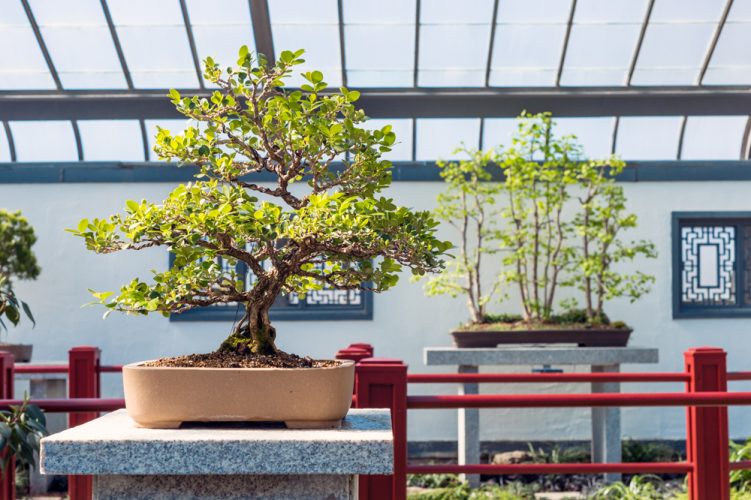Whether your interest in growing a boxwood bonsai stems from seeing a miniature tree in a shop or at a friend’s house, or if you’ve simply always wanted to give it a go since watching The Karate Kid, there are a few things you need to learn before jumping onto the bonsai wagon. First of all, not all bonsai trees are made alike. If you are expecting your boxwood bonsai to look just like Mr. Miyagi’s, then you are going to be sorely disappointed because his tree was a juniper bonsai, not a boxwood.

So, why should you start off with a boxwood? The boxwood tree is extremely suitable for the bonsai growth method because it is a natural “dwarf” tree. The leaves are very small and this species tends to grow on the slower side, making it much easier to train the tree to grow the way your creative spirit wants it to. Plus, the boxwood bonsai can tolerate temperatures as low as 25 degrees F, although the longer the tree is exposed to this temperature, the more likely it will be to show signs of decay.
The basic rule regarding watering your boxwood is the same as almost any other bonsai species: let it dry between waterings. That’s right–your bonsai will love having a regular drink of water, but unlike normal houseplants, your boxwood needs a break from the moisture. The best rule of thumb to go by is to do the “finger test”. Simply stick your finger about half an inch into the soil. If the soil near your fingertip is dry, it’s time to water your bonsai. Pour a bit of water over the soil, then wait about five minutes. Now water the soil again to ensure that your bonsai is getting a nice, deep watering that will reach the roots. You can also mist the leaves of the tree ever so often to fresh it. This is also a great way to keep dust from building up on the leaves and will encourage a glossy and fresh look.
Sunlight is another important factor to consider before jumping into boxwood bonsai care. Are you wanting a pretty indoor bonsai (consider the feng shui) or a perky and petite outdoor plant that will greet visitors? Boxwood trees do well in both direct and indirect sunlight, but if you live in a place that gets particularly warm in the afternoon, especially in the summer, then you may want to place your plant in an area that offers partial shade or indirect sunlight, such as a porch or near a window with a thin curtain. If you like, you can rotate your plant from a bright sunny spot in the morning to a shady shelter in the afternoon. This will provide excellent results.
You may be wondering whether or not you should add fertilizer to a boxwood bonsai. The answer is yes–but not all the time. Your boxwood should have a light “feeding” with a liquid fertilizer every week or two during the time that it is actively growing. In general, this is between spring and fall, but it’s best to go by what your plant is doing. If you see new growth, go ahead and give it some fertilizer. If the plant seems to be hitting a dormant period where it hasn’t sprouted any new growth in a while, then it’s probably a good idea to lay off the fertilizer.
As you can see, growing a boxwood bonsai isn’t a very difficult feat. The key to successful growth is simply to know what kind of environment the tree favors and to meet those needs. Best of luck in your bonsai venture!
